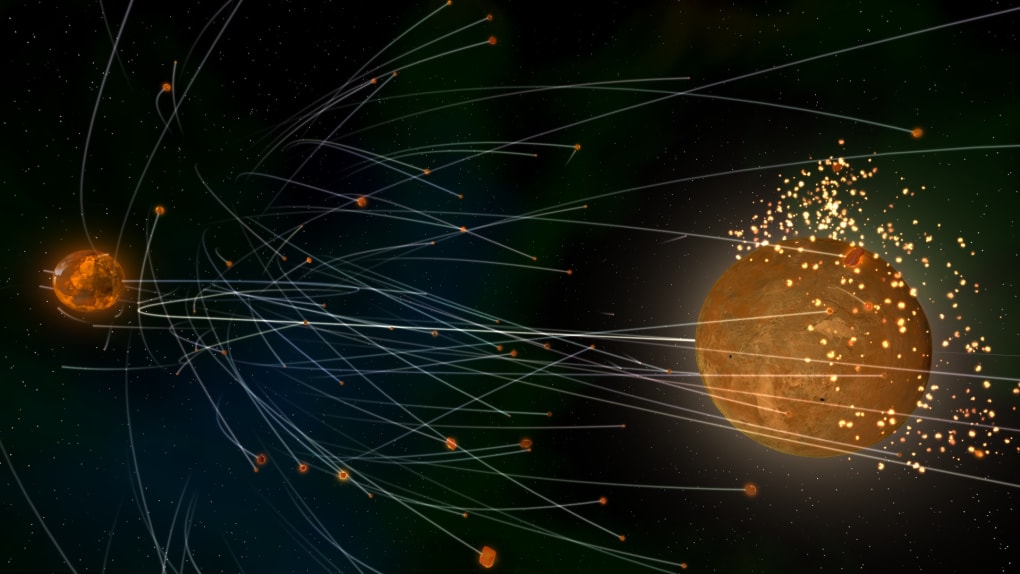
The team began working on a complete rewrite of Universe Sandbox in 2014. The gamma-ray burst locations, found in distant galaxies, can be found. Visual Lagrange points of the Earth and Moon can be seen, along with the galaxy and star system.

The Pioneer and Voyager spacecraft can be seen in its encounters with Jupiter, Saturn, Uranus, and Neptune. Players are able to view the Rho Cancri (55 Cancri) star in the constellation of Cancer they can see the five known planets in the system. Moons are able to be converged into planets, and may be able to affect the planet's atmosphere or minerals. The trans-Neptunian object 2008 KV42 with a retrograde motionorbit can be seen in a simulation. Comets can be observed colliding into planets, such as the Shoemaker Levy 9's collision with Jupiter. A visual size comparison of the largest known stars and planets can be explored, and real time animations of events like the Apophis asteroid passing near Earth in the year 2029 can be watched. During gameplay, the player may be introduced to the regions that include the 100 largest bodies in the Solar System, the nearest 1000 stars to the Sun or the nearest 70 galaxies to the Milky Way.

Real simulations include the Solar System, which includes the eight planets, five minor planets, 160+ moons, and hundreds of asteroids and predictions of future events such as the Andromeda and Milky Way galaxy collision which will occur in 3.8 to 4.5 billion years.

Both realistic and fictional simulations appear in Universe Sandbox, with each area of outer space being placed by default or according to the player's preference.


 0 kommentar(er)
0 kommentar(er)
